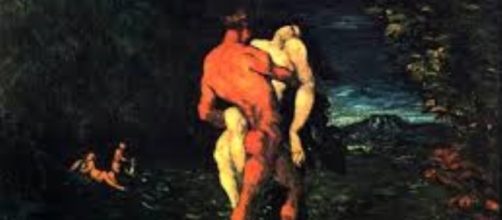The large number of exhibits at the Whitney Museum’s 2017 Biennial resurrects this column’s long-held belief that museum exhibits offer too much. This seems especially true given one of this Biennial’s themes - violence. (More about that in a moment). Trying to absorb everything is like eating too many entrees in one sitting. They’re just too hard to digest. Such a supermarket display style likely lends legitimacy to high entrance fees, but not to art appreciation.
Blood and gore
Now, about that subject of violence: The sheer ferocity implied by the topic renders it a stand-alone exhibit, particularly when it comes to Jordan Wolfson’s “Real Violence,” a 90-second virtual reality flick viewed on a headset.
After experiencing it, you need a stiff drink, not more displays. What you see are shots of the artist, first looking at you, as if to make sure he has your attention before he proceeds to beat a man with a baseball bat and then trample him to a bloody pulp.
Acting out
OK, the victim is a humanoid, a doll with parts that are made to move electronically, but seeing the savagery of this attack sickens, and is uncommonly heightened when Wolfson piles on a soundtrack of himself intoning Chanukah prayers in Hebrew. Clearly, or maybe not so clearly, the artist is talking about anti-Semitism; although New York magazine art critic Jerry Salz sees it as a political statement - “a metaphor for the unfocused furor gleaned at Trump rallies.” Odd that Salz wouldn’t reference the recent anti-Semitic attacks on Jewish cemeteries in the U.S.
Missing persons
But my beef begins with Wolfson’s title “Real Violence,” which suggests that his version of inhumanity is the real McCoy, disregarding all the bestiality against women. No surprise there. According to a report from the National Research Council, sexual assaults are underreported by the police to give the impression that they’re good at their jobs. Or maybe it’s because rape isn’t deemed a violence crime.
Criminal assault
Maybe that’s what the art world thinks about rape, too. Consider Paul Cezanne’s “The Abduction.” Probably you haven’t heard about it as much as his fame as the artist who linked Impressionism and Cubism. Picasso, speaking for his fellow modernists, called him “the father of us all.” So never mind all those pictures of violence, of rape and murder that filled his early work even though attention often goes to early work of other artists like say, Picasso and his Blue Period.
Unanswered questions
Cezanne’s “The Abduction” is so sinister, it’s hard to forget it even despite his later emotionally detached figurative work like “The Card Players” and “The Bathers.” How did he jump from picturing cruelties to calm and composed picture-making and why has art history overlooked this? Possible answer: rape of women isn’t taken seriously. Look what’s remembered about Titian’s painting “The Rape of Europa,” in which he used red to heighten the drama. It made him famous in fashion circles for “Titian red.”

